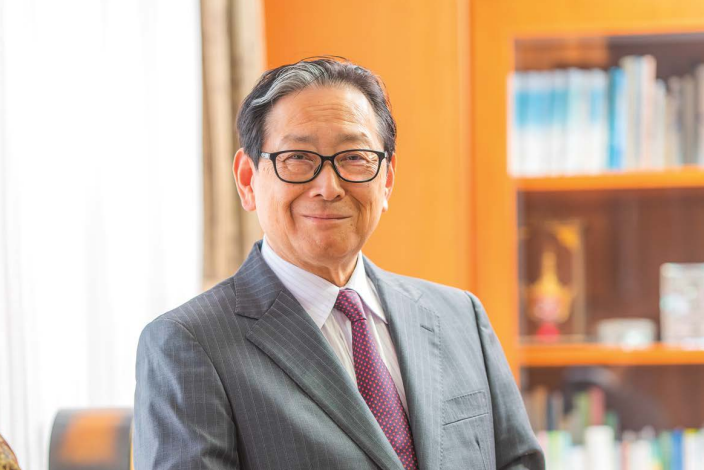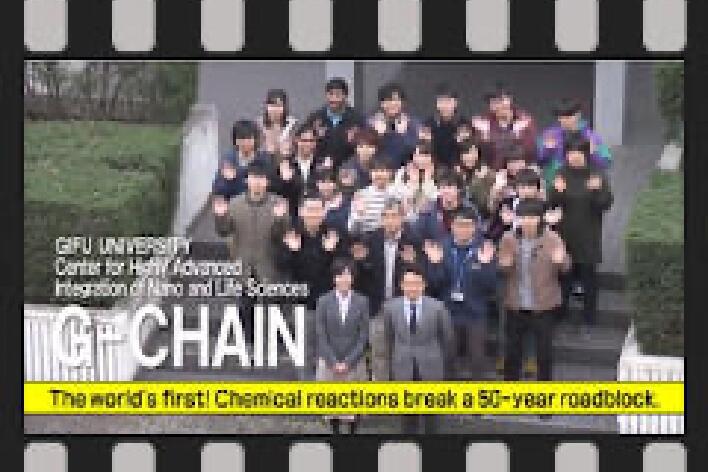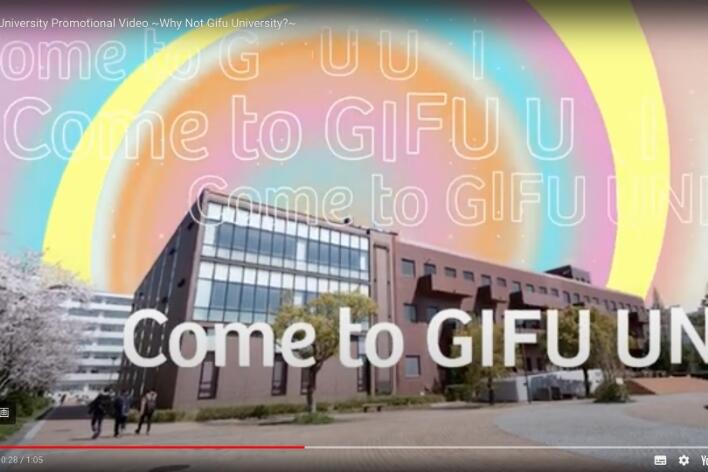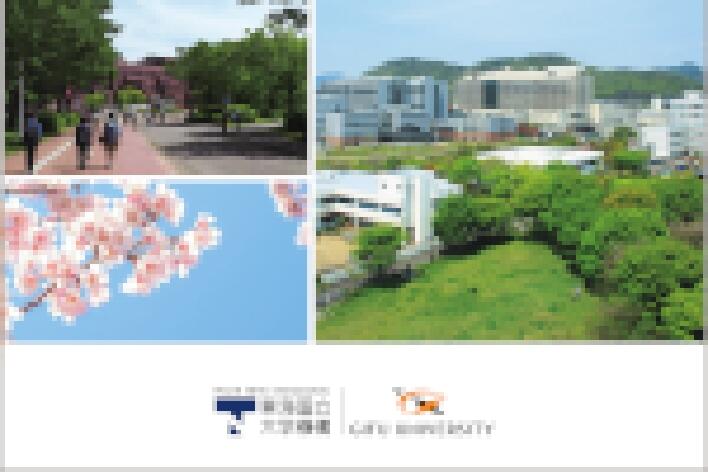Development of a new method by using a CO2-laser heating technology, allowing us to investigate the planetary interiors.
*Information related to faculty members/students and graduate schools at Gifu University here are all that of the time of interviewing.
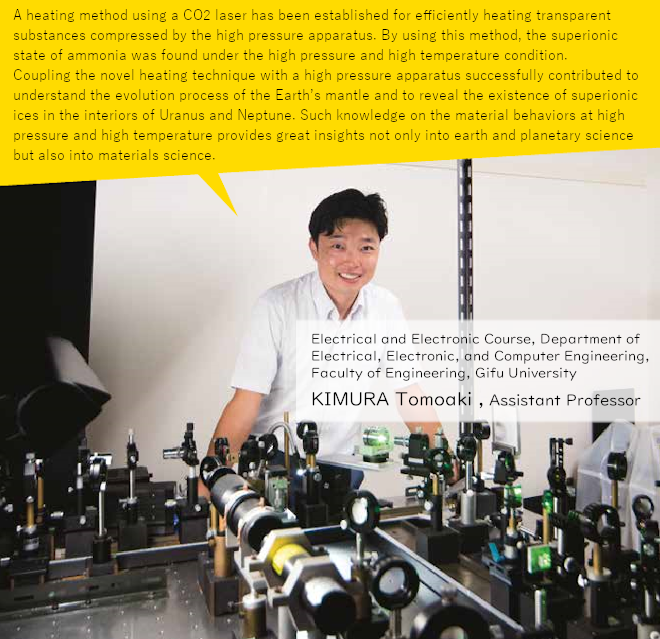
The superionic ammonia was found by using the state-of-the-art heating method newly developed.
I belonged to a research laboratory in the fusion engineering field when I was a graduate student because I wanted to contribute to solving energy issues. At that time, understanding the behavior of materials under high-temperature and high-pressure conditions was an important topic in the field. Then, a theoretical calculation predict that water and ammonia become a "superioninc state" at high temperature and high pressure, which was very mysterious for me. Here, the superionic state represents a state where hydrogen ions diffuse rapidly through oxygen or nitrogen lattices, which means that hydrogen behaves like a liquid while oxygen or nitrogen still keeps solid lattice [Fig. 1]. However, the superionic state has never been observed by experiments because of the lack of an appropriate method to produce high pressure and high temperature conditions in the transparent materials such as water and ammonia.
I consider that a CO₂ laser is a key technology to solve this problem. Unlike a near-infrared laser that has been used in this field to date, the CO₂ laser with the longer wavelength can be used to uniformly heat even the transparent materials. I developed the heating system equipped with two CO₂ laser light sources, for the first time in the world, [Fig. 2] before coming to Gifu University. The coupling this heating system with an anvil apparatus allows us to produce extremely high pressure and high temperature conditions in magnesium oxide (MgO), which is a representative material in the Earth's interior. As a result, we determined the melting temperature of MgO up to 50 GPa that is 5600 °C. The results suggest that MgO has the highest melting temperature among the mantle* minerals in the Earth's interior. Thus, the Mg components in the liquid magma would solidify in the early stage of the mantle evolution, which is important for advancing our knowledge on the evolution process of the early Earth.
*Mantle : Solid layer composed of rock between the Earth's center (core) and crust.
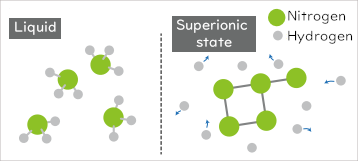
Fig. 1. Difference between liquid and superionic state
A state in which hydrogen ions diffuse rapidly though the lattice of
oxygen or nitrogen.
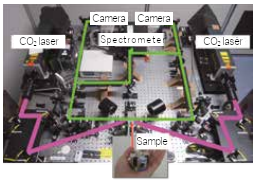
I believe that the knowledge obtained from the research on the superionic ammonia will be also useful in the field of solid-state battery for EV.

After demonstrating that a CO₂ laser is useful to heat the transparent materials, we have started a research project to identify the superionic ammonia. However, although we succeeded in producing a temperature-pressure conditions where superionic phase is predicted to be stable, there was no proven method whether the state is superionic or not. Because it is an unprecedented state, no one can evaluate it. Here, I consider that the "elasticity" is a key to understand the superionic state. The exotic superionic ice composed of the fluid-like hydrogen and nitrogen at the fixed position forming a solid lattice would be overwhelmingly softer than ordinary solids. In fact, we found that the superionic ammonia has an anomalously low elasticity comparable to the liquid based on the light scattering measurements using a visible laser. Moreover, the superionic ammonia found by this study can exist in the deep interiors of Uranus and Neptune. These planets only exhibit mysterious magnetic fields in which the magnetic field axis is greatly tilted relative to the rotational axis, unlike other planets in our solar system. The presence of ionically conductive and elastically soft superionic ammonia may contribute to generate the strange magnetic field.
Superionic conductors, which is a topic that I have been very passionate about, have the potential to be applied not only in the field of earth and planetary science, but also in our daily lives. The superionic conductors have an extraordinary high ionic conductivity even in the solid state, comparable to those of the liquids. This material has a great possibility as an electrolyte material for next-generation battery. All-solid-state batteries equipped with solid electrolytes are known to be much safer than conventional lithium-ion batteries, which are important to increase the energy capacity. The increase of the energy capacity is essential to achieve the EV shift which is urgently requested in terms of environmental concerns.
The finding of the superionic ammonia strongly motivated me to extend my research area to the engineering and material science fields. I would like to use the knowledge and experience that I have cultivated to date to solve the energy issues, which has been my longstanding goal ever since I was a student.
FY2022 Science and Technology Field
Commendation for Science and Technology by the Minister of Education, Culture, Sports, Science and Technology
the Young Scientists' Prize

Assistant Professor Tomoaki Kimura was commended by the Minister of Education, Culture, Sports, Science and Technology for his research on the application of CO₂ laser heating technology to earth and planetary science, and this heating method is expected to be applied not only in earth and planetary science but also in a wide range of fields. The Young Scientists' Prize is an award given to young researchers under the age of 40 years who have made prominent research achievements that demonstrate advanced research and development capabilities, such as research from a unique perspective.
